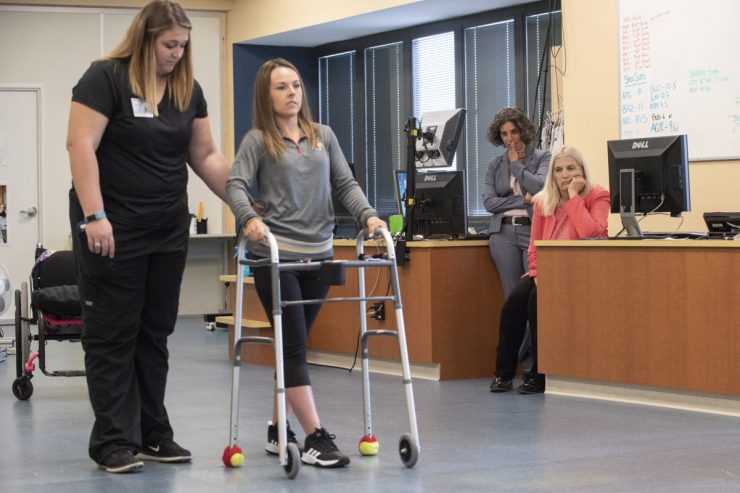With therapy and an innovative device implanted in their spines, several people who had lost the use of their legs reportedly have at least partially regained the ability to walk.
Doctors employed a pain stimulator that the University of Louisville in Kentucky developed. “I would characterize it as breathtaking,” Peter Wilderotter, who heads the Christopher and Dana Reeve Foundation, told NBC News.
The television network reported that the patients, while undergoing a rigorous training regimen, received electrical charges from the stimulators. They were amazed to find that they could move their legs again. Researchers explained that the devices permit mobility without the need for the brain to send signals to the legs.
“The spinal cord can relearn to walk independently,” said Susan Harkema of the Kentucky Spinal Cord Injury Research Center, who led the study. “It can relearn. We can retrain it to function even though there is that injury disconnecting it from the brain.”
One of the patients, Jeff Marquis of Montana, was thrilled when he walked nearly 100 yards following his Medtronic pain-stimulator implant surgery. The 35-year-old man can now live on his own, without an assistant to help him move around his home.
Marquis had been paralyzed below his chest, capable of only slightly moving his hands and wrists, since a bicycle accident seven years ago. “I was going down a trail that had a bunch of jumps that I normally skipped,” he recalled. “That day, I hadn’t really decided whether I was going around them or I was going to try it for once. I went over it without jumping and I ended up breaking my neck.”
Marquis faced many challenges. He could not breathe without a ventilator, and was unable to perform basic daily tasks. The former chef could not even cook his own food. Faced with the grim prospect of spending the rest of his life severely disabled, Marquis travelled to Kentucky to take part in the research project.
Surgeons place the stimulator in the epidural layer around the spinal cord. The device emits electrical signals into nerve tissues. Intense training is necessary for the treatment to work. “It’s a very distinctive type of therapy,” Harkema said.
The research team’s report, published in the New England Journal of Medicine, stated that “the trainers move the legs in a specialized pattern that mimics walking.” Daily training sessions involve walking on a treadmill, standing independently and taking steps without any help.
Though two patients continue to require assistance to walk, Marquis and 23-year-old Kelly Thomas of Florida need only a cane or walker. Thomas wrote: “The first day I took steps on my own was an emotional milestone in my recovery that I’ll never forget, as one minute I was walking with the trainer’s assistance and, while they stopped, I continued walking on my own.”
Doctors at the Mayo Clinic, impressed by the results in Louisville, adopted the approach for two of their patients. WebMD reported that one of the patients, a paraplegic man, no longer needs a physical trainer to walk. He had been disabled from the back down since a snowmobile accident in 2013.
The patient “was able to regain voluntary control of the movement in his legs” because his “own mind or thoughts were able to drive the movement in the legs,” said Dr. Kendall Lee, a neurosurgeon and director of the Mayo Clinic’s Neural Engineering Laboratories in Rochester, Minn.
According to Harkema, further research may lead to patients being able to train their spines and muscles to operate without the use of the pain stimulator.




